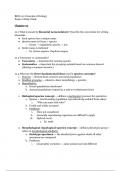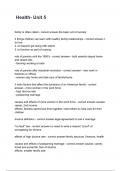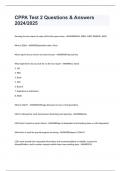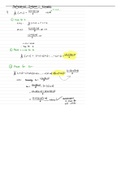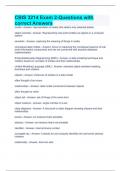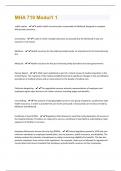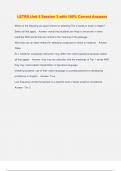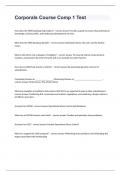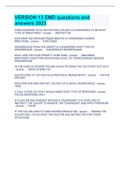Summary
Summary BIOL 211 Concepts of Zoology Exam 2 Study Guide
- Course
- BIOL 211
- Institution
- Millersville University Of Pennsylvania
BIOL 211 Concepts of Zoology Exam 2 Study Guide for chapter 10, chapter 29, and chapter 38. Topics include behavior, biomes, integument, species, nomenclature, invertebrates, movement, communication, environment and movement.
[Show more]
